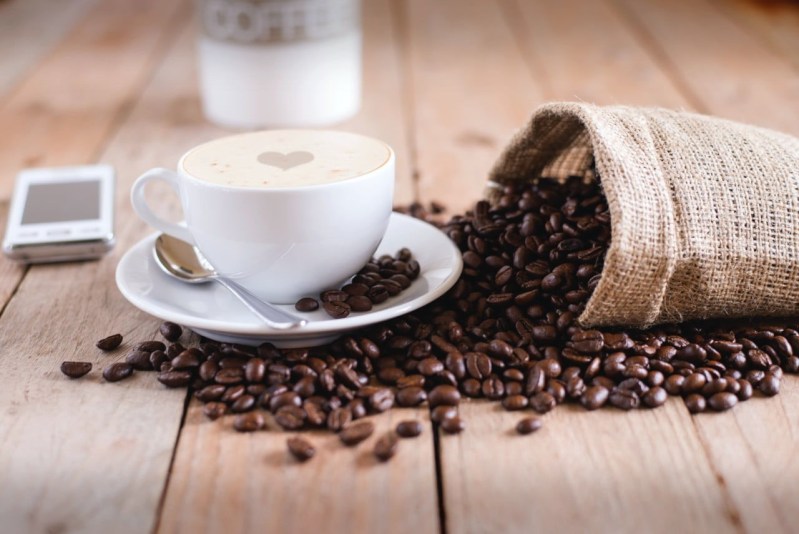Arguably the most socially acceptable, delicious drug on the market, coffee is an absolute necessity to start the day for most of us: the exhausted parent, the tense and hurried workaholic, the college student cranky from the latest all-nighter. And while we all love the convenience of our K-cups and the Starbucks drive-thru, something must be said for a beautifully brewed, freshly ground, homemade cup of coffee.
When done properly, the morning ritual involves every sense: dipping your hand delicately into the cool, smooth beans, letting them slip through your fingers, to the whir of the grinder, pulsing, and singing. The aroma of the fresh brew filling the air is intoxicating. And that first taste is hitting your lips, kissing you good morning with its dark mischief. The whole experience borders on sensual.
But what do you do if you find yourself with whole-bean coffee and no way to grind it? Having a manual or electric coffee grinder surely makes things easier, but it’s not the only way to achieve a great cup of coffee. Here’s how to grind coffee beans without a grinder.
Grinding coffee beans in a blender

Yes, you can grind coffee beans in a blender. Albeit, carefully. The blades from a blender create heat, which could possibly cook and burn your beans, causing a chalky, bitter flavor. If you do use a blender, follow these steps:
Step 1: Make sure you’re only pulsing for, at most, 30 seconds. This helps you avoid cooking the beans.
Step 2: Also, be sure you have the right amount of beans. Too few, and they’re likely to burn. Too many will make it difficult to achieve consistency in your grind.
Step 3: Use around a 1/2 cup.
Grinding coffee beans in a food processor

A food processor is another common kitchen appliance that can also help grind coffee beans. This process works similarly to using a blender, but due to the larger size of the machine, you’ll need to double the number of beans used. The wider bowl of a food processor is actually ideal for allowing the coffee beans to move around, achieving a consistent grind for your coffee. If you plan on using a food processor, follow these steps:
Step 1: Place about 1/2 to 1 cup of whole coffee beans in your food processor.
Step 2: Set to “pulse” or “grind” mode for best results. Leave the beans to pulse for about 5 seconds until your grounds are at the desired consistency. You can also tilt it to ensure all ground parts are even.
Step 3: Scrape the sides of your food processor to mix everything. Pour the coffee grounds into your bowl or coffee storage. Use them however you prefer to brew your coffee.
Other ways to grind coffee beans without a grinder

Of course, there are non-electrical methods of grinding your coffee beans. Let’s say the power is out, or you find yourself in a kitchen without any modern technology. What then? This is where things can get fun, and you can tastefully let loose your pent-up aggression.
Step 1: Fill a zip-top bag with coffee beans.
Step 2: Grab a rolling pin, frying pan, meat mallet, or anything else that strikes your fancy.
Step 3: Bang away.
Keep in mind that no matter how much aggression you may be releasing, this method will leave you with a coarser, more uneven grind on your beans. If you’re after a finer grind, you may try using a mortar and pestle. However, be warned that this method may cause you to break a sweat.
Is grinding coffee beans without a grinder worth it?

We’re all guilty of putting a little convenience first, especially on hurried mornings. Who among us hasn’t reached for the store-bought, bottled cold brew, so quickly poured into our trendy tumblers? And can’t we all admit that those cute little K-Cups make the early morning routine a little easier? But if we’re honest, waking up just a few minutes earlier seems like a small sacrifice to ensure the day starts off right with a luxurious treat.
The benefits of freshly ground coffee are surprisingly vast. In addition to the amplified flavor, there are added health benefits to freshly ground coffee as well. Freshly ground beans are also packed with even more antioxidants than pre-ground, helping the body fight off everything from heart disease to cancer.
So even if you find yourself grinder-less, know there’s no reason not to enjoy some beautiful freshly ground coffee. Whether it’s a hot morning cup you’re after, a cool espresso martini, or even a delicious brisket, coffee is much more than just an a.m. pick-me-up. And as such, it deserves to be treated as the versatile, deliciously healthy, dark, and mysterious ingredient it is.
“We want to do a lot of stuff; we’re not in great shape. We didn’t get a good night’s sleep. We’re a little depressed. Coffee solves all these problems in one delightful little cup.” — Jerry Seinfeld



